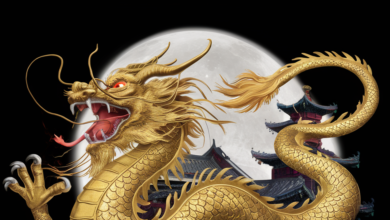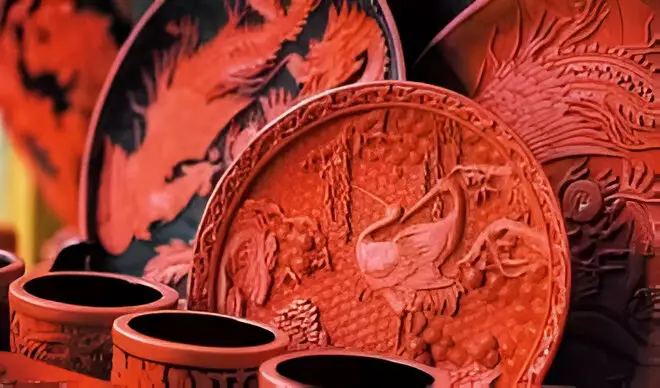
Table of Contents
Ancient Chinese lacquerware stands as a testament to the ingenuity and artistry of ancient China. From its origins over seven thousand years ago to its intricate designs and techniques perfected through various dynasties, Chinese lacquerware reflects the rich cultural and technological advancements of its time. This article delves into the evolution, techniques, and significance of this ancient craft, focusing on four of the most prominent periods: the pre-Qin era, the Han dynasty, the Tang dynasty, and the Ming-Qing periods.
The Origins and Early Development
Chinese lacquerware dates back to the Neolithic period, as evidenced by the discovery of a red lacquer bowl from the Hemudu culture, which thrived around 7,000 years ago. This early stage saw the exploration of lacquer’s properties and its use primarily in daily utensils. The characteristic red and black colors dominated this era, and the techniques of painting and inlaying were the primary decorative methods.
Pre-Qin Era
During the pre-Qin period, particularly in the Warring States era (475-221 BCE), lacquerware production flourished. The state’s investment in lacquerware, which became a significant source of economic income, underscored its importance. The production process was complex, involving multiple steps and considerable time, making lacquerware highly valuable. This period also saw an increase in the variety of lacquerware, which included furniture, utensils, musical instruments, burial items, and weapons.
The lacquerware from the tomb of Marquis Yi of Zeng in Hubei is a prime example, with over 220 exquisite items discovered. These pieces, characterized by their elegant designs and bright colors, often featured intricate patterns created with red lacquer on black backgrounds or vice versa.
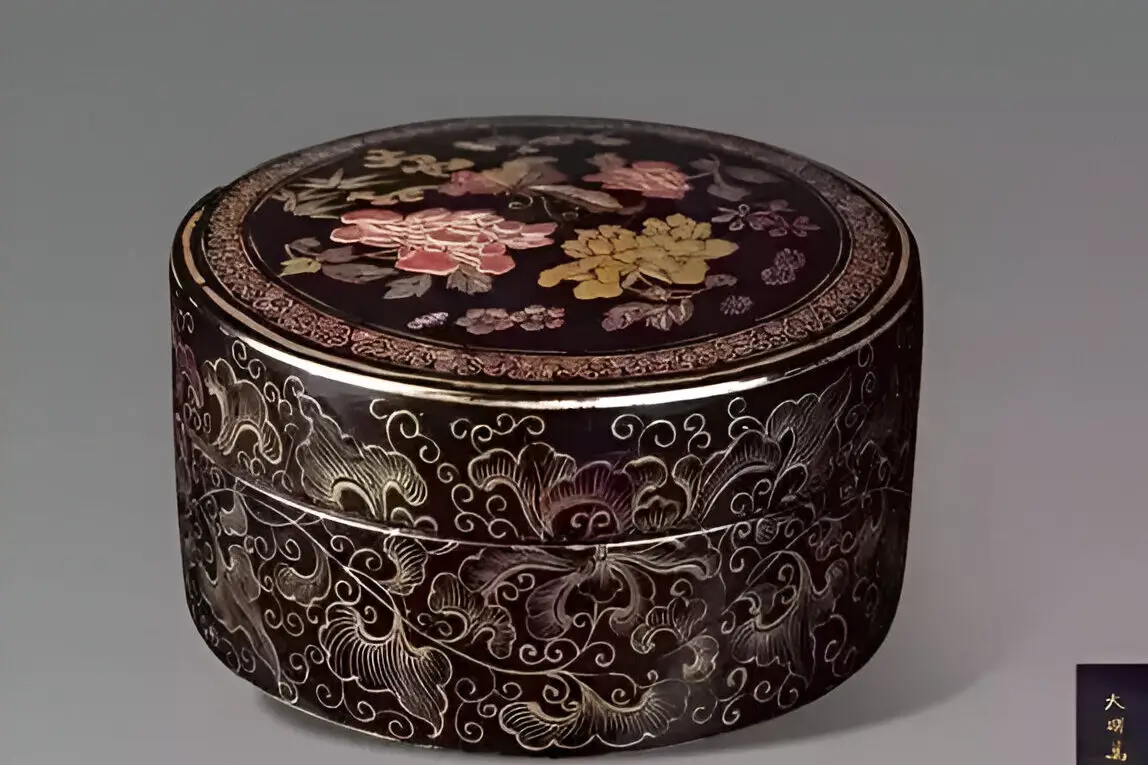
The Han Dynasty: The Pinnacle of Lacquerware
The Han dynasty (206 BCE – 220 CE) marked the golden age of Chinese lacquerware. Lacquerware from this period was primarily red and black, with a significant increase in the variety and complexity of items produced. This era introduced new techniques such as multi-colored painting, needle etching, and the use of gold and silver inlays.
Lacquerware from the Han dynasty often featured dynamic and expressive designs. The use of bold lines and vibrant colors created a sense of movement and life, depicting human figures and animals in a mythological and fantastical context. The intricate workmanship and artistic creativity of this period elevated lacquerware to new heights.
The Tang Dynasty: A New Horizon in Lacquer Art
The Tang dynasty (618-907 CE) witnessed unprecedented advancements in lacquer techniques. This period introduced «pile lacquer,» where thick layers of lacquer were built up to create raised designs. Another notable technique was the use of gold and silver inlay, known as «pingtuo,» where thin sheets of metal were embedded into the lacquer surface to form intricate patterns.
The Tang dynasty also saw the development of «qiyun,» a method involving the application of different colors of lacquer on an uneven surface, which was then polished to reveal a vibrant, multi-colored effect. The sophistication and elegance of Tang lacquerware are exemplified by items such as the exquisite «Gilt-Bronze Cup with Ears» from this era.
The Ming and Qing Dynasties: The Zenith of Lacquerware Craftsmanship
The Ming (1368-1644) and Qing (1644-1912) dynasties continued to build upon the rich legacy of lacquerware, incorporating both indigenous and foreign influences. The period saw the rise of elaborate techniques such as «carved red lacquer» (tihong), where dozens of layers of lacquer were meticulously carved into intricate designs.
Ming Dynasty
During the Ming dynasty, lacquerware production was highly refined, with master artisans like Zhang Cheng from Xitang leading the craft. His work was characterized by thick, robust layers of lacquer and intricate, round-edged carvings. The Ming era also saw the introduction of new forms and designs, influenced by the vibrant cultural exchanges of the time.
Qing Dynasty
The Qing dynasty further pushed the boundaries of lacquer art. The influence of Manchu customs and European techniques introduced new elements into the craft. Beijing and Yangzhou became prominent centers for lacquer production. The Qing period also saw the introduction of «qingbai,» a technique involving the application of a translucent layer of lacquer over an intricate carved design, creating a luminous effect.
Notable Techniques in Chinese Lacquerware
Pile Lacquer (Duiqi)
Developed during the Tang dynasty, pile lacquer involves building up layers of lacquer to create raised designs. This technique allows for the creation of detailed and textured patterns that stand out in relief against the surface of the object.
Gold and Silver Inlay (Pingtuo)
Pingtuo involves embedding thin sheets of gold or silver into the lacquer surface to form intricate patterns. This method creates a stunning contrast between the metallic gleam of the inlay and the smooth, glossy surface of the lacquer.
Carved Red Lacquer (Tihong)
Tihong is a labor-intensive technique that involves applying multiple layers of red lacquer, which are then intricately carved to reveal complex designs. This method became particularly popular during the Ming dynasty and remains one of the most recognizable forms of Chinese lacquerware.
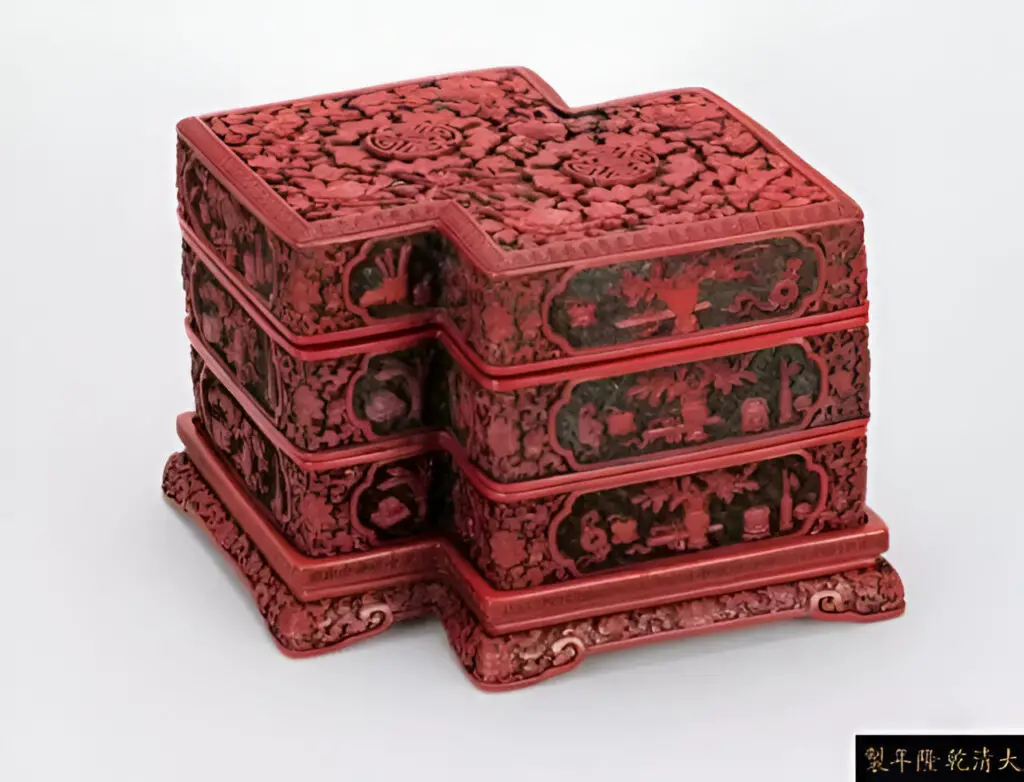
Qiyun Technique
The qiyun technique, also known as «cloud pattern,» involves applying different colors of lacquer on an uneven surface, which is then polished to reveal a vibrant, multi-colored effect. This method was developed during the Tang dynasty and showcases the artistic creativity and technical skill of Chinese lacquer artisans.
The Cultural and Historical Significance
Chinese lacquerware is more than just a craft; it is a reflection of the cultural and historical context of its time. Each piece tells a story of the era in which it was made, from the utilitarian objects of the Neolithic period to the elaborate decorative items of the Qing dynasty.
The evolution of lacquerware techniques and designs mirrors the broader developments in Chinese society, including changes in political power, economic conditions, and cultural exchanges. The enduring appeal and influence of Chinese lacquerware can be seen in the way it has inspired artisans and collectors around the world.
The Influence of Lacquerware Beyond China
Chinese lacquerware had a profound influence beyond its borders, reaching other parts of Asia and Europe. The Silk Road facilitated the spread of lacquerware, and it became highly prized in Japan, Korea, and Southeast Asia. Japanese lacquerware, known as «urushi,» developed its unique styles and techniques while drawing inspiration from Chinese methods.
In Europe, Chinese lacquerware became highly fashionable during the 17th and 18th centuries, particularly among the aristocracy. This period saw the rise of «chinoiserie,» a European decorative style that imitated Chinese art and design. European craftsmen attempted to replicate the lacquer techniques, but the complex process and the unique properties of Chinese lacquer made it difficult to achieve the same quality.
The Modern Revival and Preservation
In contemporary times, there has been a renewed interest in traditional Chinese crafts, including lacquerware. Efforts are being made to preserve and revive these ancient techniques. Artisans and scholars are working to document traditional methods and pass them on to new generations.
Modern artists are also finding innovative ways to incorporate lacquer techniques into contemporary art. This fusion of traditional and modern elements keeps the craft alive and relevant in today’s artistic landscape.
Challenges in Preservation
Despite the renewed interest, preserving traditional lacquer techniques faces significant challenges. The labor-intensive nature of the craft, coupled with the scarcity of raw materials, makes it difficult to sustain large-scale production. Additionally, the knowledge and skills required to produce high-quality lacquerware are at risk of being lost as older artisans retire without passing on their expertise.
Efforts to address these challenges include government and private initiatives to support traditional crafts, educational programs to train new artisans, and collaborations between artists and craftsmen to explore new applications for lacquer techniques.
Key Figures in Lacquerware History
Several notable figures have played crucial roles in the development and preservation of Chinese lacquerware. Their contributions have helped shape the craft and ensure its legacy.
Zhang Cheng (张成)
Zhang Cheng was a master craftsman during the Ming dynasty, known for his exquisite carved lacquerware. His works are characterized by their intricate designs and robust layers of lacquer. Zhang Cheng’s influence extended beyond his lifetime, and his techniques continue to inspire contemporary artisans.
Shen Shao’an (沈绍安)
Shen Shao’an was a renowned lacquer artist during the late Qing dynasty. He is best known for his «carved red lacquer» technique, which involved applying multiple layers of red lacquer and then carving intricate designs. Shen Shao’an’s work exemplifies the pinnacle of Qing dynasty lacquer artistry, and his pieces are highly sought after by collectors.
The Environmental Impact of Lacquer Production
The production of lacquerware has environmental implications that must be considered. The lacquer used in traditional Chinese lacquerware is derived from the sap of the lacquer tree (Toxicodendron vernicifluum). Harvesting this sap requires careful and sustainable practices to ensure the health and longevity of the trees.
In recent years, there has been a growing awareness of the need for sustainable practices in lacquer production. Efforts are being made to develop eco-friendly methods and materials that reduce the environmental impact while maintaining the quality and authenticity of traditional lacquerware.
Conclusion
Chinese lacquerware is a testament to the ingenuity and artistry of ancient Chinese craftsmen. From its humble beginnings over seven thousand years ago to the sophisticated techniques and designs of the Ming and Qing dynasties, lacquerware has evolved into a highly prized art form that continues to captivate and inspire. The intricate designs, vibrant colors, and enduring beauty of Chinese lacquerware make it a true masterpiece of ancient Chinese culture.
As we reflect on the rich history of Chinese lacquerware, we gain a deeper appreciation for the skill and creativity of the artisans who created these exquisite objects. Their work not only enriches our understanding of ancient Chinese art but also reminds us of the timeless beauty and cultural significance of this remarkable craft.
The ongoing efforts to preserve and revive traditional lacquer techniques ensure that this ancient art form will continue to thrive. By supporting these initiatives and promoting the appreciation of Chinese lacquerware, we can contribute to the enduring legacy of this extraordinary cultural heritage.
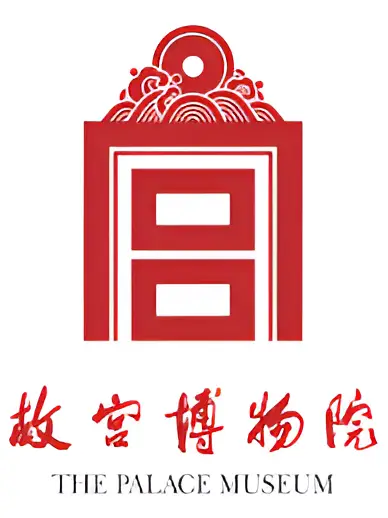
Explore stunning photos of Chinese lacquerware on the official Forbidden City Museum website! Click here to visit!


